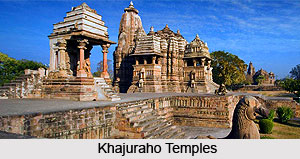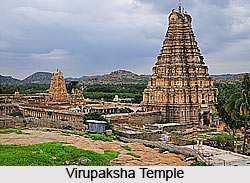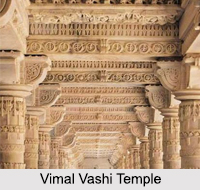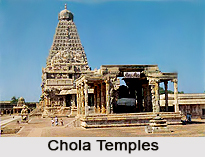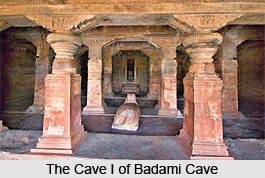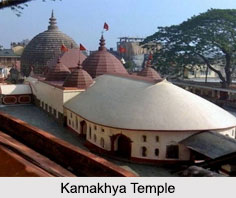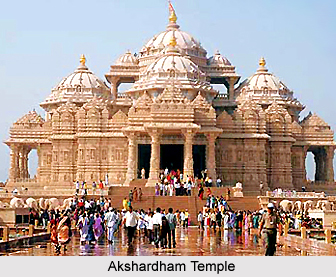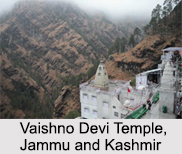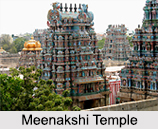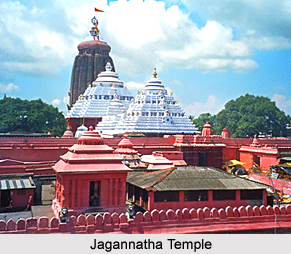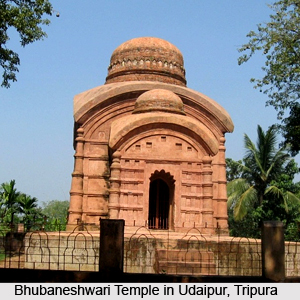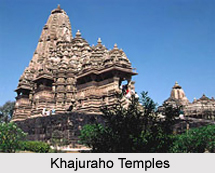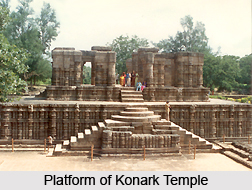 Konark Temple, Orissa stands on a magnificent platform which is over 4 metres high. Its facade richly carved bearing a well-moulded base. The next division corresponds to the lower jangha of the bada with upright slabs containing miniature representations of shrines with wagon-vaulted roofs (khakhara-mundis) in close succession. In the niches of these khakhara-mundis are mainly figures of beautiful women. One of these depicts a touching scene of leave-taking of an old mother, presumably on the eve of her departure on a pilgrimage. The mother, bent with age, tenderly blesses her son. The daughter-in-law reverentially wipes the dust off her feet, while the grandchild fondly clings to her.
Konark Temple, Orissa stands on a magnificent platform which is over 4 metres high. Its facade richly carved bearing a well-moulded base. The next division corresponds to the lower jangha of the bada with upright slabs containing miniature representations of shrines with wagon-vaulted roofs (khakhara-mundis) in close succession. In the niches of these khakhara-mundis are mainly figures of beautiful women. One of these depicts a touching scene of leave-taking of an old mother, presumably on the eve of her departure on a pilgrimage. The mother, bent with age, tenderly blesses her son. The daughter-in-law reverentially wipes the dust off her feet, while the grandchild fondly clings to her.
Upright slabs are boldly relieved with various motifs; erotic couples and voluptuous young women flaunting their beauty in various attractive postures. Other frequent motifs are of nagas or nagis, mythical beings who are depicted with a human bust, a multi-hooded canopy and the tail of a serpent coiled around a pillar and vyalas (composite animals).
The bandhana, the third division contains richly carved mouldings. Further up on the upper jangha of the platform are large pancha-ratha pilasters that are remarkable for their elaborate compositions. In one of the few surviving reliefs on the southern side is depicted a temple in which are enshrined images of Mahishasuramardini and Jagannatha and a linga. These reliefs indicate not only the extension of the royal homage to deities of the Vaishnava, Shakta and Shaiva cults, but also the existence of goodwill and a feeling of tolerance that apparently prevailed among the adherents of different sects.
Another interesting relief depicts a king, seated on an elephant, receiving the homage of a group of outlandish men clad in frilled petticoat-like lower garments. Evidently they have brought gifts for the king, one of which includes a giraffe. In some reliefs an important personage is shown seated on a low stool, delivering a discourse to a group of noblemen or princes` whose mounts - horses and elephants - are shown standing below the pavilion.
The top moulding of the platform contains a row of geese or four-petalled flowers alternating with diamond-shaped flowers, while below it are friezes of marching armies, a row of elephants, provision-carriers and an assemblage before a king with a beaded border below it.
